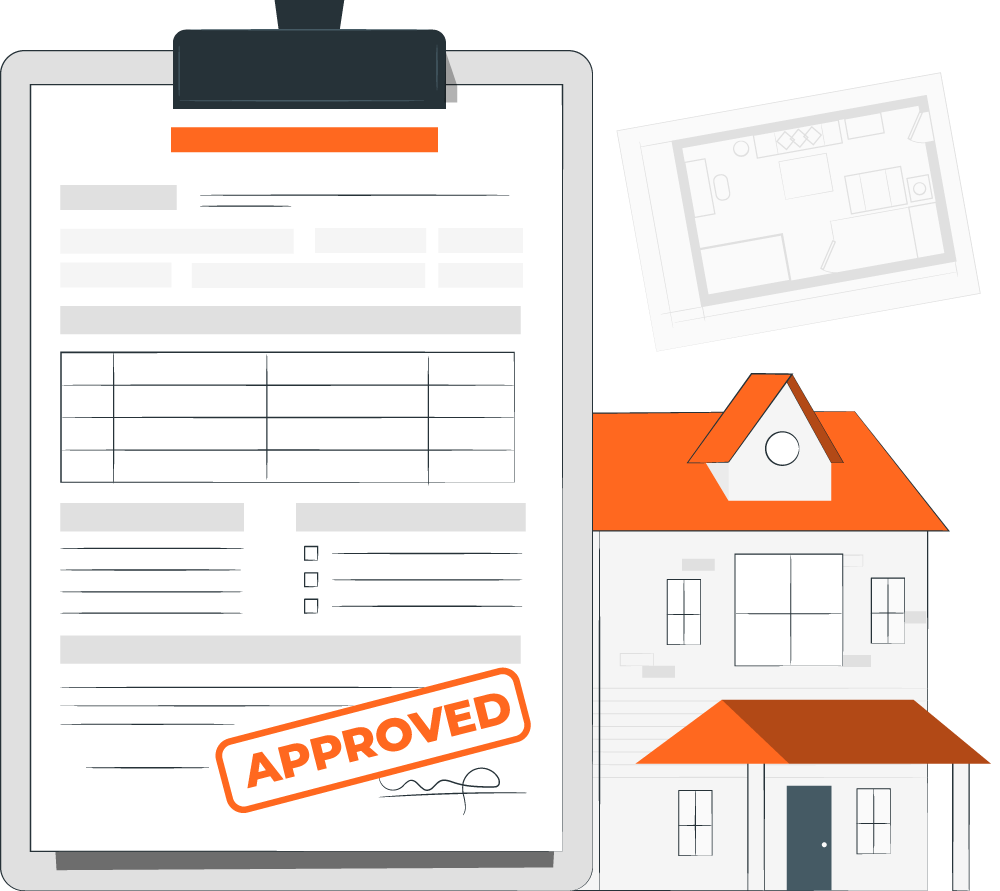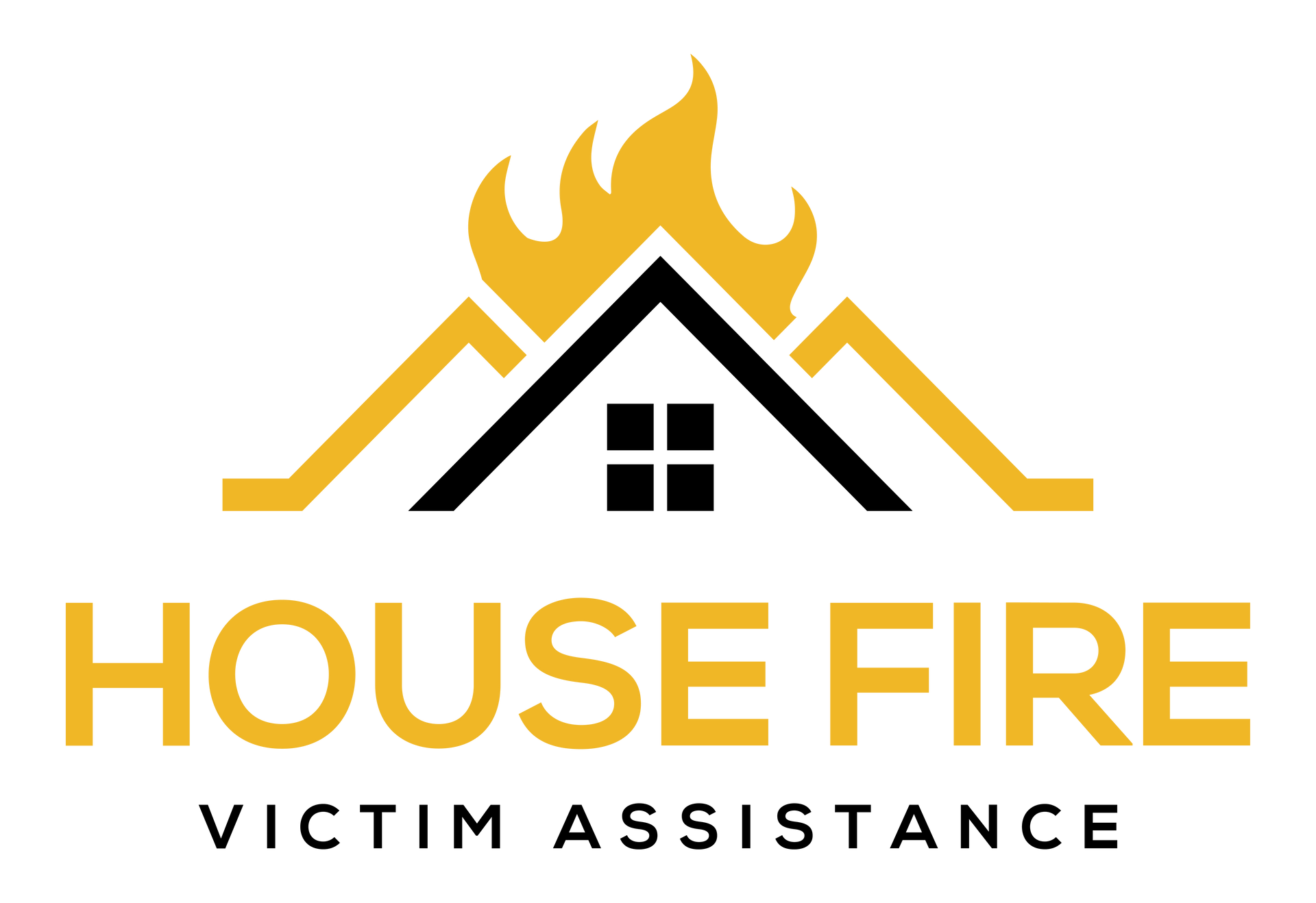Selling a House with Fire Damage As-Is in California
Get a Cash Offer From a Trusted Local Investors
Homepage

Fire damage can transform a cherished California property into an overwhelming burden overnight. While the path forward may seem uncertain, local real estate investors are increasingly providing property owners with swift, practical solutions through as-is purchases.
These specialized buyers understand the intricate challenges of fire-damaged properties and typically close deals within 1-2 weeks, taking on the responsibility of restoration themselves.
The California real estate market offers unique opportunities for selling fire-damaged properties, from minor smoke damage to extensive structural issues.
Local investors bring specialized knowledge in
property assessment,
market valuation, and the nuanced legal requirements specific to
damaged property sales in the state. Their streamlined approach often eliminates the need for costly repairs while ensuring compliance with
state regulations and
mandatory disclosure laws.
Initial Steps After Fire Damage
I've helped numerous California property owners work through the challenging aftermath of fire damage, and I can tell you firsthand that quick, strategic action makes all the difference. Whether you're planning to sell to local investors or restore your property, those first few steps are crucial for both safety and future transactions.
Immediate Safety Measures
Your
safety comes first - always. Before even thinking about property sales or renovations, reach out to your local
fire department for a
structural safety assessment. I've learned from experience that proper protective gear is non-negotiable:
- N95 mask or respirator for breathing protection
- Steel-toed boots for foot safety
- Heavy-duty gloves to protect your hands
- Long-sleeved clothing and pants
Watch for warning signs like cracking sounds, shifted walls, or sagging ceilings. These could indicate serious structural issues that need immediate professional attention.
Documentation Requirements
Think of documentation as telling your property's story - it needs to be thorough and clear. Here's what you'll need:
- Complete photos of all damage (both overview shots and close-ups)
- Detailed inventory lists of affected areas and items
- Videos of the damage, if possible
- Emergency responder reports and assessments
I recommend creating a digital folder to organize everything. Trust me - having these materials readily available makes a huge difference when dealing with
insurance companies or potential investors.
Insurance Company Communication
Starting a clear line of communication with your
insurance provider is essential. Here's my tried-and-true approach:
- Contact your insurance company immediately after the fire
- Request a claim number and direct contact information for your assigned adjuster
- Keep a detailed communication log including:
- Dates and times of all conversations
- Names of representatives
- Summary of what was discussed
- Follow-up actions required
Send important communications via email when possible. Having a written record has saved many property owners from potential misunderstandings during the claims process. This documentation also builds credibility with investors who might be interested in purchasing your fire-damaged property.
Property Assessment For Sale
Understanding your fire-damaged property's true condition sets the foundation for successful negotiations with potential investors. I've helped numerous property owners explore this challenging process, and a detailed assessment always proves invaluable for establishing realistic expectations and market value.
01.
Professional Inspection Process
A thorough professional inspection serves as your property assessment cornerstone. Partner with a licensed inspector specializing in fire damage to get an in-depth assessment of your property. Here's what quality inspectors typically examine:
- Structural integrity and foundation stability
- Electrical system functionality
- Plumbing system condition
- Environmental hazards from fire residue
- Hidden damage behind walls and under floors
The resulting documentation becomes your powerful negotiation tool, giving investors the concrete data they need to make
confident purchasing decisions.
02.
Damage Classification Types
Fire damage creates distinct patterns that directly impact your property's marketability. From my experience working with damaged properties, these are the primary categories you'll encounter:
- Direct fire damage: Burned structures, melted materials, and charred surfaces
- Smoke damage: Penetrating odors and residue in walls, ceilings, and fixtures
- Water damage: Moisture issues from firefighting efforts
- Secondary damage: Mold growth, corrosion, and material deterioration
Understanding these classifications helps you speak the same language as investors, leading to more productive negotiations about your property's condition.
03.
Cost Analysis Of Repairs
Getting detailed contractor estimates creates a clear picture of your property's rehabilitation needs. While you might not tackle these repairs yourself, having solid numbers helps investors understand their potential investment. Essential elements to include:
- Structural repair costs
- Cosmetic restoration expenses
- Code compliance updates
- Material replacement estimates
- Labor costs for specialized restoration work
These figures give investors the clarity they need to make informed offers that reflect true renovation requirements.
Impact On Property Value
Your property's current value emerges from a complex interplay of factors that savvy investors carefully consider. Location quality, local market trends, and comparable sales create the basic framework. The property's after-repair value (ARV) minus renovation costs and investor profit margins typically determines offer prices.
Key value factors include:
- Current local real estate market conditions
- Similar property sales in your area
- Extent of fire and related damage
- Property's potential after complete rehabilitation
- Neighborhood development trends
Armed with this knowledge, you'll better understand investor offers and can negotiate from a position of strength based on market realities.
California Legal Requirements
Selling a fire-damaged property in California isn't as straightforward as a typical real estate transaction. Selling a fire-damaged property in California isn't as straightforward as a typical real estate transaction.
Mandatory Disclosure Laws
California's
disclosure laws are some of the toughest in the nation, and for good reason. Here's what you need to know:
- You must complete a Transfer Disclosure Statement (TDS) that includes:
- Detailed information about the fire incident
- The full extent of the damage
- Documentation of all repairs (completed or attempted)
- Current condition of the property
Even in "as-is" sales, these disclosures aren't optional. I've seen sellers face serious legal consequences for omitting fire damage information, so always document everything in writing. Trust me, thorough documentation is your best protection.
State-Specific Regulations
California's building codes and safety standards are especially rigorous for fire-damaged properties. Each municipality might have its own set of rules, so here's what to keep in mind:
- Habitability standards must be met
- Structural integrity requirements vary by region
- Local ordinances may affect rehabilitation options
- Different zones have specific safety compliance needs
Working with local investors who understand these regulations has saved many of my clients time and headaches during the transaction process.

Permit Requirements
The permit process can be challenging to understand. Here's a quick breakdown of what you need to know:
- Document all permits pulled for post-fire cleanup
- Verify completion of existing permit work
- Understand future permit requirements for:
- Repairs
- Demolition
- Reconstruction
- Special clearances
While investors typically handle future permits, having this knowledge helps set realistic expectations and can make your property more attractive to potential buyers.
Liability Considerations
Don't assume your liability ends at closing. Based on my experience, you'll want to:
- Maintain appropriate insurance coverage until closing
- Include clear liability transfer terms in your sales agreement
- Consider working with a specialized real estate attorney
- Get all agreements reviewed by legal professionals
The most successful transactions I've seen involved attorneys who specialize in damaged property sales. They can structure agreements that protect your interests while satisfying all legal requirements.
Local Investor Landscape
I've spent years working with California property investors, and I can tell you firsthand that understanding the local investor environment makes all the difference when selling a fire-damaged property. Let me share what I've learned about finding the right buyer who can turn a challenging situation into a successful sale.
✅ Types of Property Investors
California's real estate market attracts diverse investors interested in fire-damaged properties:
Real Estate Investment Companies
- Maintain specialized teams for distressed properties
- Offer streamlined evaluation processes
- Have established renovation crews ready to go
Fix-and-Flip Investors
- Focus on quick turnaround projects
- Look for properties with good profit potential
- Often have local market expertise
Long-Term Investment Groups
- Target properties in prime locations
- View fire damage as a temporary challenge
- Focus on long-term appreciation potential
✅ Benefits of Selling To Investors
From my experience helping homeowners sell fire-damaged properties, working with investors offers several compelling advantages:
Speed of Sale
- Typical closing time: 1-2 weeks
- Quick relief from financial burden
- Minimal paperwork and red tape
Simplified Process
- "As-is" purchase agreements
- No repair requirements
- Cash offers eliminate financing delays
Reduced Hassle
- No property staging needed
- Skip multiple showings
- Avoid buyer hesitation issues
✅ Finding Reputable Local Buyers
Finding trustworthy investors takes some legwork, but I've discovered several reliable methods:
Research and Verification
- Check California Department of Real Estate credentials
- Review past transaction history
- Contact previous sellers for references
Professional Networks
- Connect with local real estate agents
- Join real estate investment groups
- Attend property investment meetups
Online Resources
- Research local investment companies
- Read customer reviews and testimonials
- Verify business licenses
✅ Investor Expectations
I've noticed that successful deals happen when sellers understand what investors need. Here's what to prepare:
Required Documentation
- Fire department reports
- Insurance claim details
- Professional repair estimates
Property Access
- Full inspection availability
- Permission to assess hidden damage
- Access to all areas of the property
Market Information
- Recent comparable sales
- Neighborhood development plans
- Current zoning regulations
Remember, professional investors will analyze your property's potential value after repairs, considering location, market trends, and renovation costs. Having this information ready shows you're serious about selling and helps speed up the transaction process.
Pricing Strategy For As-Is Sales
Setting the right price for a fire-damaged property isn't as straightforward as you might think. I've worked with numerous homeowners in similar situations, and I've found that success lies in balancing current market conditions with the property's unique circumstances.
Market Value Determination
Your property's
current market value stems from a combination of its
pre-fire worth and
present condition. Here's what matters most:
- Pre-damage property value
- Extent of fire, smoke, and water damage
- Professional damage assessment reports
- Location and land value fundamentals
I always remind sellers that while fire damage impacts the structure's value, the property's location and land often retain significant worth - sometimes even becoming the primary value driver.
Comparable Property Analysis
Finding the right comparables for
fire-damaged properties requires thinking outside the box. Let me break down the most effective approach:
- Focus on recent sales of fire-damaged properties nearby
- Look at distressed property sales in your area
- Analyze final selling prices rather than listing prices
- Consider properties sold "as-is" due to other types of damage
The key is understanding what investors actually paid, not what sellers hoped to get. This real-world data proves invaluable in setting realistic expectations.
Negotiation Factors
Your negotiating power depends on several critical elements:
- Severity of structural damage
- Estimated repair costs
- Current real estate market conditions
- Status of insurance claims
- Post-renovation property potential
I've noticed that investors pay particular attention to
insurance claim settlements. They're often more interested in properties where they can work directly with
insurance companies to resolve outstanding claims, potentially offering better terms in such cases.
Price Adjustment Considerations
Smart pricing requires flexibility and regular reassessment. Here's what to monitor:
- Feedback patterns from potential buyers
- Time the property spends on market
- Monthly carrying costs
- Ongoing maintenance expenses
- Market response to your listing
From my experience, accepting a slightly lower offer from a reliable
investor who can close quickly often yields better financial results than holding out for a higher price while expenses continue to mount.
Marketing To Local Investors
I've spent years working with property owners and investors, and I can tell you that marketing a fire-damaged property requires a unique approach. Let's explore how you can effectively present your property to local investors while being transparent about its condition and highlighting its true potential.
Effective Presentation Methods
Create a compelling property showcase by:
- Taking high-quality photos that document both damage and salvageable features
- Developing interactive virtual tours for convenient remote viewing
- Including drone footage to showcase the property's location context
- Creating before-and-after comparison shots of similar renovation projects
Remember to be upfront about the damage - I've found that investors appreciate honesty and it helps build trust from the start.
Key Selling Points
Your fire-damaged property likely has several attractive features worth highlighting:
- Prime location and neighborhood demographics
- Lot size and development potential
- Zoning flexibility
- Recent pre-fire improvements
- Neighborhood growth projections
I always recommend gathering repair estimates and engineering reports beforehand. These documents help investors quickly assess the project's scope and potential return on investment.
Property Information Package
Put together a detailed information kit that includes:
Detailed fire department reports
Insurance claim assessments
Professional inspection findings
Property history documentation
Previous renovation records
Relevant building permits
Architectural drawings or plans
Having this information readily available shows professionalism and helps investors make informed decisions faster. Trust me - the more organized your documentation, the smoother the sale process will be.
Digital Marketing Techniques
Maximize your property's online visibility through:
- Investment-focused real estate platforms
- High-quality virtual property tours
- Local real estate investment group connections
- Targeted email campaigns to known investors
- Social media networking with property rehabilitation specialists
I've noticed that investors particularly appreciate prompt responses to their inquiries. Keep your communication professional and consistent - it often makes the difference between a successful sale and a missed opportunity.
Remember to regularly update your listings with new information and maintain open lines of communication with interested parties. Your responsiveness and transparency will help build confidence in potential buyers and speed up the decision-making process.
Closing Process
The closing process for a fire-damaged property doesn't have to be overwhelming. I've helped many homeowners guide these waters, and while it requires attention to detail, understanding the key steps makes everything more manageable.
Local investors often make this journey easier, as they bring valuable experience with similar properties and typically move through procedures more efficiently.

Sale Agreement Components
Your sale agreement needs to be crystal clear when dealing with fire-damaged property. Think of it as your safety net - every detail matters. Here's what your agreement should include:
- A detailed description of the property's fire damage and current condition
- The exact purchase price and expected closing timeline
- Specific conditions related to the property's state
- A detailed "as-is" clause that protects both parties
Having worked with numerous fire-damaged properties, I've found that being extra detailed in this phase prevents headaches down the road.
Required Documentation
Let's get your paperwork in order. Here's a thorough checklist of what you'll need:
- Original deed and title insurance documentation
- Fire incident reports and insurance claim records
- Professional inspection reports and damage assessments
- California-specific disclosure statements
- Existing permits and repair estimates
- Property tax records
- Current utility information
Create a digital folder for these documents - it's saved me countless hours during past transactions.
Escrow Procedures
Think of
escrow as your transaction's safe harbor. Your
escrow officer acts as a neutral third party, ensuring everything proceeds smoothly. They'll:
- Coordinate document flow between all parties
- Manage and verify fund transfers
- Double-check contractual obligations
- Keep the process moving forward
- Stay responsive during this phase - I've seen many deals speed through simply because all parties remained actively engaged.
Final Transaction Steps
The home stretch requires careful attention to detail. Start by reviewing all closing documents, particularly those fire damage disclosures. Work closely with your title company to clear any lingering liens or claims.
Cash purchases through local investors often wrap up surprisingly quickly. I've seen deals close within days after signing the final paperwork. Remember to:
- Double-check all fire damage documentation
- Verify fund transfers are ready
- Prepare for either in-person or remote closing
- Keep copies of everything
Smart tip: Create a closing checklist and store digital copies of all documents - you'll thank yourself later during tax season.
Get a Cash Offer From a Trusted Local Investors
Home2 - Website Form
Frequently Asked Questions
How quickly can I sell my fire-damaged house to a local investor?
Working with local investors offers a remarkably quick solution - most sales wrap up in just 1-2 weeks. I've seen many homeowners breathe a sigh of relief knowing they can move forward so quickly.
These investors typically bring cash to the table and have plenty of experience with fire-damaged properties, which means you won't face the usual holdups of bank financing or drawn-out inspections.
What documentation do I need to sell my fire-damaged property in California?
Let me break down the essential paperwork you'll need:
- Fire department's incident report
- Insurance claim documentation
- Professional inspection reports
- Clear property title
- California-specific disclosure statements
- Repair estimates from qualified contractors
- Pre-fire condition documentation
- Current photos showing damage extent
Can I sell my house while insurance claims are still pending?
You absolutely can! I've helped many homeowners move through this situation successfully. The key is being upfront about pending claims with potential buyers.
Most experienced investors are quite familiar with this scenario and can work with you on either transferring the claim or adjusting the purchase agreement accordingly. Just remember to keep your insurance company in the loop about your plans to sell.
How do local investors determine their offer prices?
Think of the investor's offer as a simple equation: Your property's current market value minus repair costs equals their initial offer. They'll look at several key factors:
- Severity of fire damage
- Property location
- Current market trends
- Post-repair resale potential
- Required renovation costs
The final number reflects what they'll need to invest to transform your property back into a marketable home.
What are the potential tax outcomes of selling a fire-damaged property as-is?
The tax picture can get a bit complex, as it depends on your unique situation. Your tax outcome will be influenced by your original purchase price, any insurance payments received, and your final sale price.
Here's some good news - you might qualify for casualty loss deductions, and fire-damaged properties often have special considerations regarding capital gains. I always recommend sitting down with a qualified tax professional who can review your specific case and explain the potential tax outcomes before you proceed with the sale.
Conclusion
I've helped numerous California homeowners sell their fire-damaged properties to local investors, and I can tell you firsthand - it's often the most practical solution when facing such challenging circumstances.
The process is remarkably straightforward: you can typically
close within 1-2 weeks, skip those expensive repairs, and avoid the usual headaches of traditional real estate sales.
Here's what makes selling to local investors particularly appealing:
- Cash offers with no financing contingencies
- As-is purchases, regardless of fire damage extent
- Zero repair or renovation requirements
- Quick closings (usually 1-2 weeks)
- Simplified paperwork handling
Let me share something I've learned from years in this market - local investors bring unique advantages to the table.
They're well-versed in California's property regulations and understand the local market terrain intimately. I've seen them transform severely damaged properties into beautiful homes, which is why they can offer fair market values while taking on all the rehabilitation work themselves.
Having guided many homeowners through this process, I can assure you that the investor route offers a clear path forward after fire damage. You won't have to worry about staging, repairs, or lengthy negotiations - instead, you can focus on moving forward with your life.
While fire damage may have affected your property, working with
local investors provides that crucial first step toward your fresh start. Trust me, I've seen the relief on homeowners' faces when they realize they can leave the burden of fire damage behind and move forward with confidence.



